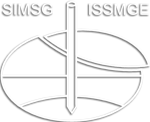Settlement analysis for a nuclear plant design
Settlement analysis for a nuclear plant design
Nuclear plants are very heavy and sensitive structures, therefore very interesting to study in geotechnics. When the site contains soft soil layers, settlements can be significant, and foundation adaptation may be required. Since standard methods are not fit for such high displacements and low tolerances, sophisticated settlement studies are carried out to ensure feasibility. First, adequate geotechnical soil investigations have to be carried out in order to evaluate soil behavior and particularly to estimate their stiffnesses accurately. Once in-situ and laboratory tests have been cross-analysed, soil moduli are derived for the correct range of strains. For new projects on existing sites, the choice of soil moduli is often guided by a back analysis carried out on the nearby operating plant. The complexity might lead to build a 3D model to assess the settlements, taking into account various elements (dewatering, sequence of construction, different backfill areas, etc.). Both drained and undrained (with consolidation) situations are considered. Non-linear behaviour is also assessed for sensitivity calculations. The results are to be used in the different aspects of the design with regards to the tolerances (raft design, thresholds against flooding levels, joints between buildings, pipe displacements, etc.). The article presents the calibration of the settlement model using in-situ data as well as the back-experience from the monitoring on the current plant nearby and give an overview for the use of the results.
M. Blanckaert; Baptiste Pelletier; S. Depinois; M. T. Hoang
18th European Conference on Soil Mechanics and Geotechnical Engineering (ECSMGE2024)
A - New developments on structural design
